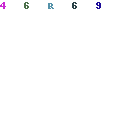Learning comes alive in simulated client labs
SIUE’s Department of Social Work may be one of the only social work departments in the country that offers students an opportunity to gain practical experience via simulated client labs, according to Larry Kreuger, department chair and professor of social work.

Hsin-hsin Huang, assistant professor of social work, and Kristina Schiber, social work graduate student, role play a typical simulated client lab scenario.
Simulated client labs allow social work students at both the undergraduate and graduate levels to work with real people (“actors”) in a pseudo social work environment as a means to practice and develop their abilities.
The idea was introduced to SIUE by Kathleen Tunney, associate professor of social work, when she joined the department in 1997.
“About 15 years ago when I was in Chicago, the simulated client method was used very extensively in the medical school.” said Tunney. “Physicians were trained using simulated patients – or standardized patients as they are known in medicine.”
Although the use of simulated or standardized clients is quite common in the medical field, Tunney and another colleague saw the advantages of adding the practical teaching method to social work learning.
Bryan Duckam and Hsin-hsin Huang, both assistant professors of social work, have found that the use of the simulated clients offers their students – among other things – a more “authentic” social work experience.
“I think it’s important for two reasons. It gives our students feedback about their skills and their level of empathy; and it gives them an experience of working with a client without damaging a client and without having all sorts of misattunements or empathic failures out there,” explained Duckham.

(L-R) Kathleen Tunney, associate professor of social work; Kristina Schiber, social work graduate student; Bryan Duckham and Hsin-hsin Huang, both assistant professors of social work, discuss the advantages of having simulated client labs in the social work curriculum.
Another interesting feature of the labs is that the rooms are equipped with video cameras that record the students’ sessions with simulated clients. This feature gives students an opportunity to see themselves in the social work environment and pick up on any personal behaviors (nervous twitching, excessive smiling, inappropriate facial expressions and so on) that may make future clients uncomfortable.
“People, often times, don’t notice themselves… so when you record them and people are able to watch themselves, they notice that they do all sorts of little things,” explained Huang.
Kristina Schiber, a social work graduate student, can attest to some of the many advantages of having the simulated client labs in the social work curriculum at SIUE.
“I learned to be more confident,” said Schiber. “It was really interesting going from having class the day before and learning about listening or reflecting and then actually going right in and trying it. I learned more concrete skills.”
Social work faculty members have found that many of their students share Schiber’s sentiments.
“This is really making problem-based and case-based learning come alive,” said Tunney. “We can lecture students for an hour and all of a sudden we say ‘I had a case when…’ and everyone is awake again! Social workers are practical people, they want to come in and do good work for human beings, communities and small groups.”
SIUE’s Department of Social Work is giving students the opportunity to do just that.
Filed Under: Social Work












